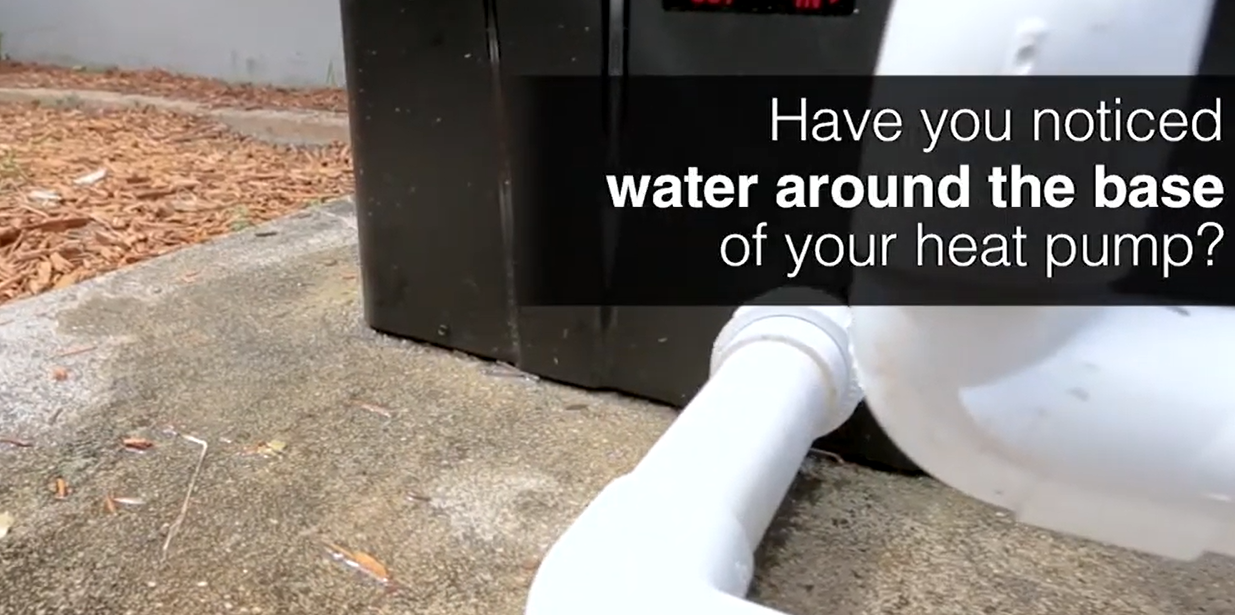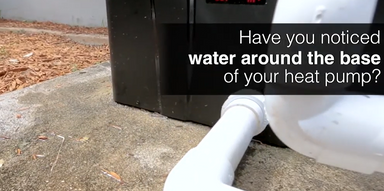Published by Matt Fichera on 03/06/2020
Heat Pump Leak or Simply Condensation?

It is the first warm summer night and you have just arrived home from work. You’re thinking about a quick dip in the pool with the kids before grilling dinner and relaxing for the evening. You walk by your swimming pool heat pump and there is a large amount of water that appears to be coming from underneath it. You cringe at this sight and think, “Oh no that’s definitely a leak!” but then you give it some more thought while also remembering that the source of the water could be condensation. You are not sure one way or the other and kind of stuck. What do you do?
The very first thing we would ask is the following: “Have you noticed water around the base of your heat pump before?” It is in fact normal to see some water at the base of your heat pump and the amount varies based on the humidity within the air. The question is however, “How much is too much?” and “When is the presence of this water indicative not of condensation, but in fact from a leak somewhere within your heat pump system?” Certainly, under the right conditions, factoring in both temperature and humidity, some heat pump models can in fact produce up to 7 to 9 gallons of condensation per hour. Either way you still need to get to the bottom of this.
The following options will help you get a better understanding of the situation and decide whether or not to call for service.
The easiest way to determine if you have a water leak is to use chlorine test strips. Use one strip to test the water in the pool thus ensuring that chlorine is actually present within this water. Next, use another strip to test the water that’s accumulating around the heat pump base. If no chlorine is present in this water then there is no leak present. If there is chlorine there is a good chance that something is wrong.
Another way to determine if you have a water leak is to utilize orthotolidine or (OTO) for short. Purchase a 1 oz. bottle from your local pool store and squeeze a few drops into the water in your pool. After doing this you should see a bright yellow color within the water indicating the presence of chlorine. Repeat this process checking the water around the heater for the presence of chlorine. If there is no color change this means that there is no chlorine present and therefore, no leak. Do not attempt this test with reagents from a DPD test kit as these are susceptible to giving a false positive result.
A third way of checking for a leak involves turning off the heater while making sure that the filter pump continues to run. If the water coming from the heat pump tapers off at this point, and completely stops within a few hours then there is no leak within the heat pump. But if the water does not stop then you may in fact have a leak.
Through one of these tests, if you determine that there is a leak in your heat pump or if you are still not sure, reach out to your local pool service company to schedule an appointment. We also would be happy to help if you wanted to reach out to us for advice. We have 30 years in the swimming pool business and have helped resolve many problems and issues along the way.





